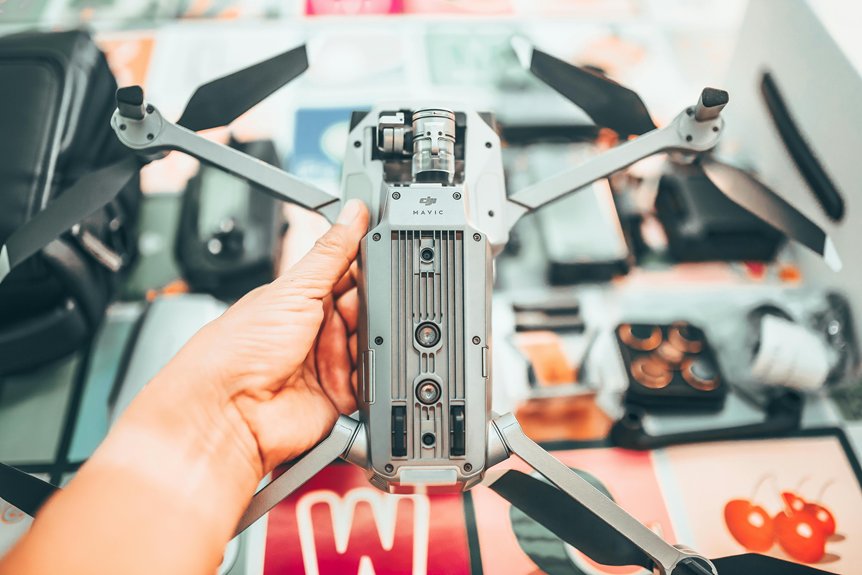As a new drone pilot, safety should be your top priority. Familiarizing yourself with local regulations and conducting thorough pre-flight checks are essential steps you can't overlook. Staying aware of your surroundings and having an emergency plan in place will help ensure safe operations. But what else should you consider to avoid potential pitfalls? Let's explore the critical aspects of drone safety that every pilot needs to know.
Understanding Local Regulations and Restrictions
Before you launch your drone into the sky, it's crucial to understand the local regulations and restrictions that govern its use. Each area has its own set of rules, and ignorance isn't an excuse.
Check if you need to register your drone with local authorities, as many regions require it for legal operation. Familiarize yourself with no-fly zones such as airports, military bases, and crowded public events.
You'll also want to know about altitude limits and privacy laws. Always stay updated, as regulations can change frequently.
Joining local drone clubs or online forums can help you stay informed. By adhering to these regulations, you not only ensure your safety but also the safety of others.
Pre-Flight Checklist for Safe Operations
A thorough pre-flight checklist can make all the difference in ensuring a safe and successful drone operation.
Start by inspecting your drone for any physical damage or loose parts. Check that the battery is fully charged and securely connected. Make sure your propellers are in good condition and properly attached.
Verify that your remote control is functioning correctly and has fresh batteries. Before takeoff, review your flight plan and confirm that you're aware of local airspace regulations.
Don't forget to ensure that you have a clear line of sight during your flight. Lastly, check the weather conditions; avoid flying in strong winds or rain.
Following this checklist will help you fly confidently and safely.
Best Practices for Flight Environment Awareness
While you may feel excited to fly your drone, staying aware of your flight environment is crucial for safety. Before taking off, survey the area for potential hazards like power lines, trees, and buildings.
Keep an eye on the weather, as wind and rain can impact your flight. Always check for nearby people and animals to avoid accidents.
Familiarize yourself with local regulations and airspace restrictions to ensure compliance. Use your drone's live feed to stay oriented and monitor your surroundings during flight.
Maintain a visual line of sight with your drone at all times, and be prepared to adjust your flight path if necessary.
Emergency Procedures and Incident Reporting
In the event of an emergency, knowing how to react quickly can make all the difference in ensuring safety.
First, stay calm and assess the situation. If your drone loses control or experiences a malfunction, follow your pre-planned emergency procedures. This may involve activating the return-to-home feature or safely landing the drone in a clear area.
After resolving the emergency, document the incident. Record details like the time, location, and nature of the malfunction. This information is crucial for improving your flying skills and might be necessary for reporting to authorities.
Familiarize yourself with local regulations regarding incident reporting to ensure compliance. Always remember, preparation and quick decision-making are your best tools in an emergency.
Conclusion
By following these drone safety tips, you'll set yourself up for successful and responsible flying. Always stay informed about local regulations, conduct thorough pre-flight checks, and maintain awareness of your surroundings. Remember to have a solid emergency plan in place, including utilizing return-to-home features. Prioritizing safety not only protects you and your investment but also fosters a positive image for the drone community. Happy flying, and stay safe out there!

